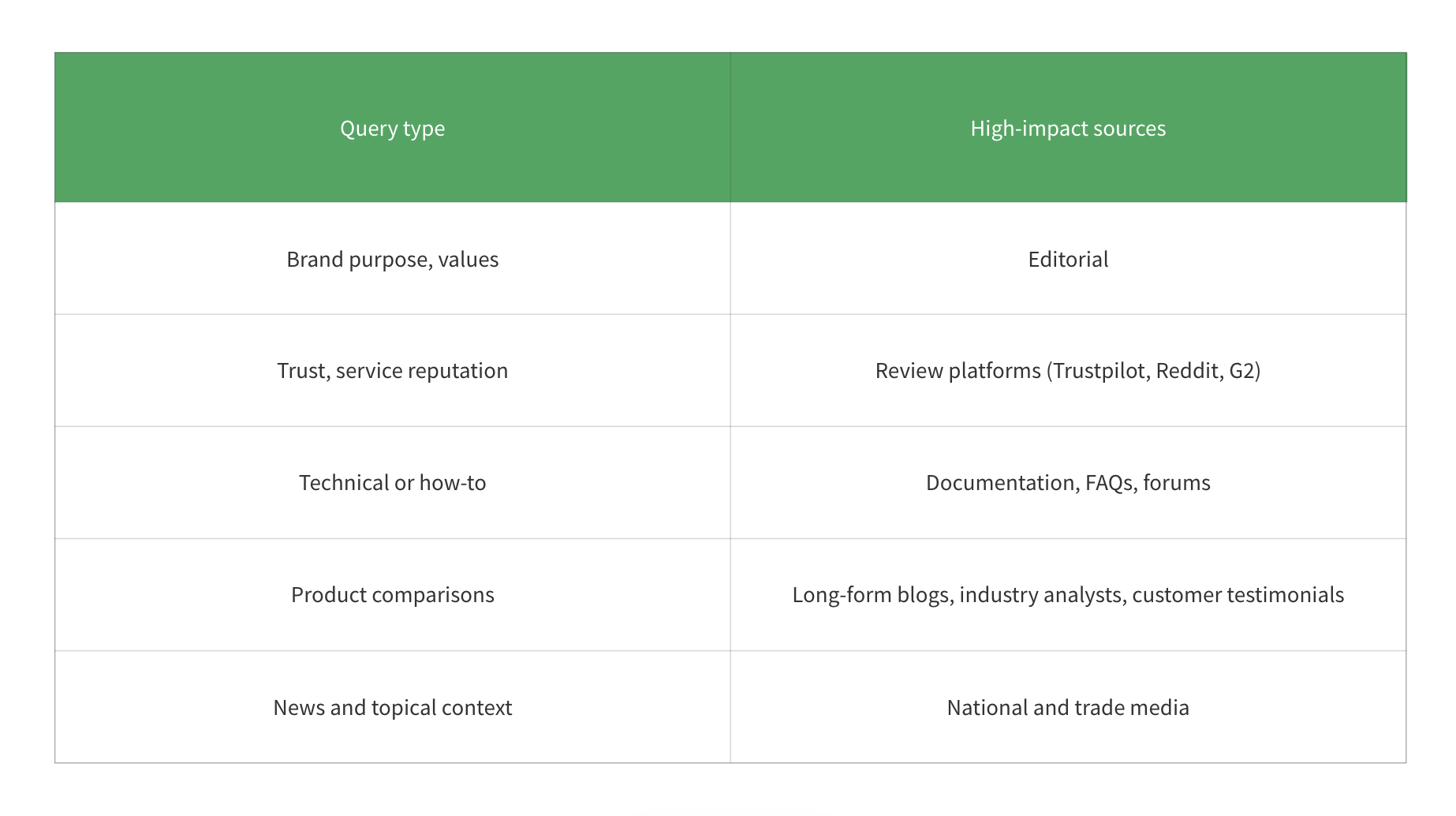How public relations can lead on AI visibility
AI-powered answers are replacing search results. Public relations needs to respond. It’s time to understand, adapt and lead.
We’ve firmly entered the era of zero-click. Consumers aren’t browsing. They’re asking and accepting the answer that AI large language models (LLMs) and other consumer AI discovery tools provide.
Google’s AI Overviews now reach two billion monthly users in more than 200 countries and 40 languages. As click-through rates drop by as much as a third, brands are experiencing a sharp decline in search traffic.
Your own analytics likely reflect this shift.
Website traffic is no longer a reliable measure of brand visibility. If your brand isn’t included in an AI-generated summary, you don’t exist in the public conversation.
“When we receive an AI-generated response, we tend to accept it immediately, stopping our search. It’s a phenomenon called anchor bias.”
GEO: The new battleground for influence
This is Generative Engine Optimisation (GEO). It’s a nascent area where public relations has a significant opportunity to lead.
If SEO is about improving your ranking in search results, GEO is about ensuring you're cited in the AI's answer. And the key to that inclusion? Earned and owned media.
Darryl Sparey, managing director at Hard Numbers, cites a blog post by US venture capitalist Andreessen Horowitz from May 2024 as the turning point in the shift from SEO to GEO.
Hard Numbers’ own analysis, published in December 2024, reported that 61% of AI-generated brand content originates from editorial sources. This rises to 72% for brand value queries. The research analysed GPT-4's responses about quality, trust, innovation and value across Forbes' top 100 brands, tracking and categorising all sources cited.
According to a report published last week by Muck Rack, more than 95% of sources cited in AI LLM responses are unpaid, with editorial media accounting for 27% of all citations across all market categories. This figure rises for timely and topical queries. Muck Rack analysed more than a million links from AI responses.
AI models reference trusted journalism, owned content and user-generated feedback. Herein lies the opportunity for public relations to own this strategic ground.
Tailor your public relations strategy to AI query types
AI rewards context and media diversity according to both Hard Numbers and Muck Rack. Generative engines don’t care whether your brand shows up in a tier-one title or a high-ranking webpage. These factors help, but the key issue is whether the page helps answer the question that has been queried.
Each model has its own areas of focus:
ChatGPT tends to lean towards traditional editorial sources, such as Axios, BBC and The New York Times.
Gemini taps into the crowd, pulling heavily from forums, Reddit and other user-generated platforms.
Claude combines the two, drawing from both structured reporting and lived experience, depending on the nature of the query.
Your AI media list now needs to include a diverse ecosystem: earned editorial, UGC forums, technical repositories and trusted review hubs.
To respond effectively, public relations practitioners need to think like machines. That starts with mapping which platforms influence which kinds of questions. This is set to become an important area of planning.
Table: How to show up in AI-generated answers (Source: aggregated data via Hard Numbers and Muck Rack)
Generative AI demands a new public relations playbook
Public relations practice missed out on SEO. A new marketing discipline emerged in its place. Let’s not make the same mistake with GEO.
Generative AI is where reputation is now being shaped, searched and remembered. Public relations is uniquely positioned to lead on this disruptive opportunity, but only if it starts building strategies for the AI platforms that shape visibility today.
My prediction? We’re on the edge of a wave of investment and innovation in this category, particularly in planning and measurement tools. Hard Numbers is selling GEO consulting services and Muck Rack is promoting an AI insight tool.
Ben Verinder and I have added a new chapter on this to our upcoming book AI for Public Relations. We’d love to connect with others building the next wave of services, technology, or training to help communicators lead in the age of AI.
Public relations practitioners have the tools, experience and storytelling instinct to lead the transformation from SEO to GEO. But leadership means action: understanding how AI finds and values content, investing in new strategies and rethinking what visibility means in the age of LLMs.

